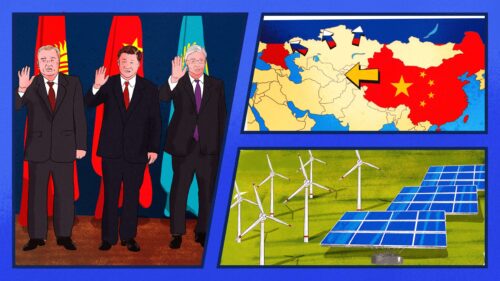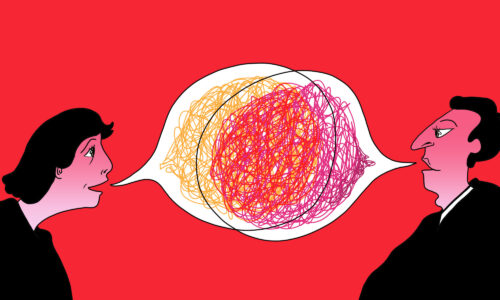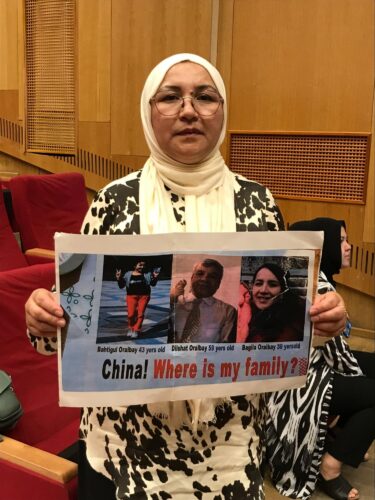What Kazakhstan’s history classrooms teach their students about China
China is expanding its engagement in Central Asia. But in Kazakhstan’s history classrooms, official textbooks leave many teachers and students with more questions than answers about their powerful neighbor.

Chinese President Xí Jìnpíng 习近平 will meet with his counterparts from Kazakhstan, Kyrgyzstan, Tajikistan, Turkmenistan, and Uzbekistan at the China-Central Asia Summit in Xi’an, the capital city of Shaanxi Province, on May 18–19, as part of Beijing’s broader efforts to deepen its economic cooperation in the region.
But as the number of Chinese investments grows in Central Asia, so do the risks: In Kazakhstan, fears of Chinese expansion are being taught in history classrooms, souring many young Kazakhs’ perception of China. And those negative attitudes may undermine the long-term stability of Chinese projects despite the considerable economic benefits to be gained from interconnectivity between China and Kazakhstan.
Simmering tensions in Kazakhstan
The city of Xi’an has marketed itself as the eastern starting point of the ancient Silk Road that connected China to Rome through Central Asia, and a symbol of connectivity between China and the region. In Kazakhstan, however, that image is belied by simmering tensions on the ground.
Since 2018, there have been 156 anti-Chinese protests reported in the country, with many of them voicing discontent about China’s growing economic and political influence. In 2016, countrywide demonstrations erupted against proposed legal changes, which would have allowed foreigners to rent agricultural lands for 25 years. Some of the protesters had expressed concerns that Chinese investors would rent and buy the land.
Users on the popular nationalist Kazakh website Qamshy.kz expressed their anger with the recently drafted scheme that allows Kazakhstani and Chinese citizens up to 30 days of visa-free travel. One user said: “I am completely against the entry of Chinese people into our country; I am jealous of my country, my land; the Kazakh land belongs only to the Kazakh people; our ancestors protected it with the sweat of their foreheads, with the tip of a spear, until the last drop of their blood, and left it as a legacy to their descendants.”
Meanwhile, the Kazakh government has tried to silence most of the activism on Beijing’s repression of Uyghurs and other Turkic-speaking minorities, including Kazakhs, in Xinjiang. But the public outcry from detainees’ relatives has continued through continuous demonstrations in Kazakhstan.
Kazakh history classrooms still carry Soviet views of China
Political education was always a valuable tool to shape how young Soviet citizens come to understand their place in the world. Kazakh textbooks, however, mainly focus on countries’ political and economic affairs, including China’s, rather than people-to-people interactions.
Teachers, especially those at eastern Kazakhstan schools, have long regarded neighboring China with caution, given Kazakhstan’s Soviet legacy, geographic proximity, and historical ties. Many of those teachers recall that, during the country’s time under the Soviet Union, their lecturers warned them of China, “Do not wake up the lion.”
Although Kazakhstan’s history textbooks have been rewritten multiple times, structurally, they remain the same as they were during the Soviet period. World history school textbooks concentrate heavily on the political and economic composition of countries, with little attention paid to the people who reside in those countries. The dominance of politics-centered content feeds into views of China as mainly a state with global ambitions, rather than a nation of trade and commerce with a history of Silk Road connections.
Stark differences in development along the Chinese border
Kazakhstani teachers and students’ perceptions of China have been deeply influenced by the fact that they share a border. They believe that both China and Russia look at Kazakhstan from the position of being “big brothers,” but not as equal partners. Some have expressed concerns about overpopulation and the rapid economic growth in China compared with Kazakhstan.
Teachers have shared that their students are curious about the contrasting levels of development along their shared border, with many seeing those differences as evidence of China’s strength. Although the Soviet Union and China were both communist, China’s smooth transition to a market economy enabled the rapid building of modern industries. Now the Chinese side of the border boasts good-quality roads, installed street cameras, and a high level of urbanization. In contrast, the Kazakh side lags behind in technological infrastructure.
Fears of Chinese expansion
A Kazakh schoolteacher who works in the eastern part of the country, near the border with China, told The China Project: “Since ancient times, the Chinese state has always looked at our land. But the Russian tsar took advantage of the then-war between the Kazakhs and the Dzungars and quickly colonized the Kazakh lands. So China could not take anything from the Kazakh land.”
However, China is also praised by Kazakh teachers as being “a great star of Eastern civilization” at the forefront of many discoveries such as paper, gunpowder, the seismograph, the compass, silk, and tea. China also made significant maritime discoveries along with European travelers. Those historical feats have fed into the perception of China’s dominance: Kazakh history teachers now believe that China is a global leader in economic development and a strong competitor to Western countries such as the U.S.
How Kazakh teachers talk about Xinjiang
Limited information is available in history textbooks about the settlement of ethnic Kazakhs in Xinjiang and their current immigration to Kazakhstan. Kazakh students often ask their teachers why ethnic Kazakhs live in neighboring Xinjiang — but even teachers are keen to learn more about Xinjiang Kazakhs, given the lack of information currently available in their textbooks.
While history textbooks clearly explain the Turkic origins of modern-day Kazakhstan, they often present the territory of modern Xinjiang merely as a geographic concept, emphasizing its role in connecting mainland China to Central Asia during the time of the Silk Road. Chinese expansion into Central Asia is therefore portrayed only as an endeavor to seek new trade routes, rather than connecting Uyghurs and Central Asians to the common Turkic-origin concept of East Turkestan. In fact, when “East Turkestan” — a loosely defined geographical and historical region that is also referred to as the homeland for Turkic-speaking Uyghurs — is used in Kazakh textbooks, it mostly refers to the vast territory of present-day Xinjiang without exploring the cultural and ethnic origins of the people who have long inhabited the region.
In the vacuum of information, some teachers are still determining what is happening in “reeducation camps” in Xinjiang, while others have even questioned these camps’ existence. Their confusion is further exacerbated when ethnic returnees from Xinjiang remain hesitant to talk about their past. But without the inclusion of peoples’ histories in official textbooks, China’s political dominance remains a mystery.





